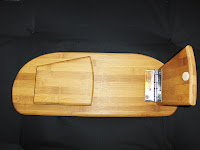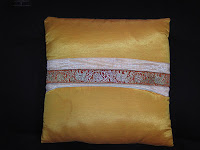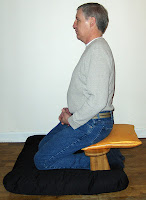.JPG) |
| Cobweb |
My "Middle Way" search to managing back pain while sitting zazen is to find 2 sitting positions I can move between to balance the stresses.
I've already reviewed my seiza bench which still proves to be the most comfortable. Now I'm looking for a cushion solution that allows me to shift from kneeling to a cross-legged position.Currently I'm testing out a cushion I purchased from the Zen Mountain Monastery (Dharma Communications The Monastery Store.) I've been using it for about a week testing different leg positions. Now I'm adjusting the height by removing some of the buckwheat shells. I'll do the full review next week.
The one thing I will say already is that I LOVE their zabuton. It is very comfortable; in fact, I'd say it is definitely the most comfortable zabuton I have ever used. I'll describe why with the full cushion review.
I sit in my study. On the window shelf I have a number of items and a cobweb has formed between 2 of them. Today's concentration was on the cobweb. It would float up and down with wind currents. Small specks of dust continue to collect on the strand breaking up the light. The surface is rough.
We sat together.
Floating cobweb. Thoughts drifting off...awareness...cobweb...drifting off...awareness...cobweb . cobweb . cobweb ... drifting off ... cobweb.
Friendly bows _/|\_
























